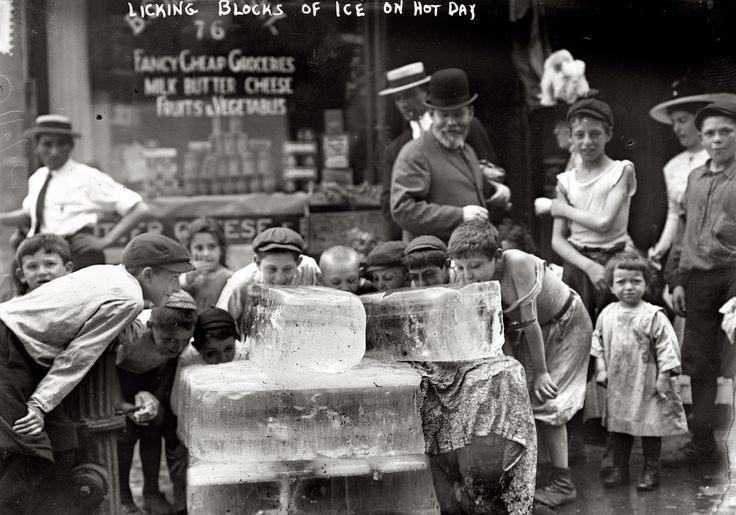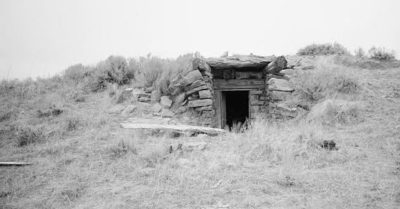It’s common to talk about keeping warm as part of survival, but few people actually bother to talk about keeping cool. Yet, for those of us who live in the south, keeping cool in the summertime can be as much of a survival issue, as keeping warm is for our northern cousins.
We solve that problem in true American fashion, by staying indoors and keeping our home, places of business and even cars air conditioned. But what about when the power goes out? What can we do then? Air conditioning consumes a lot of electricity to operate, so without electrical power, we have no readily available means of cooling … or do we? After all, our ancestors survived this sort of climate; so if they could do it, we should be able to do it, too.
The trick, as with many other parts of urban survival, is to look at how our ancestors did things a century or two ago and figure out how to adapt that to our modern-day lives.
Obvious Means of Cooling
1. Stay in the Shade
While the ambient air temperature in the shade isn’t really any cooler than it is in the sun, the apparent air temperature can be quite different. The sun beating down on our skin turns to heat, adding to the heat we’re receiving from the air around us. So, judicious use of shade is a valuable tool.
This needs to be a factor in how we design our homes, as well, especially in our use of landscaping. Building a house where it is overshadowed by large trees is a great way to keep it cool. Those of our ancestors who could do so built their homes where shade already existed. Those who couldn’t often planted trees as soon as they moved in, especially on the south side of their home.
Another manifestation of this is the wrap-around porch. These weren’t built so much as to give people a place to sit outside in the shade — although they did do that — but to keep the sunlight from coming through the downstairs rooms. At the same time, the sun wasn’t heating the ground up right around the home, causing the breeze coming through the windows to heat up before entering the home.
2. Use Fans
Sweating is the body’s natural means of shedding excess heat. When the sweat evaporates, it absorbs large amount of heat from our bodies, cooling us. Wind, in any form, helps to improve that cooling process by speeding up the evaporation process.
Homes built in the south were often situated in such a way as to catch whatever breeze was available, especially the homes of the wealthy. A good breeze can make any home seem cooler than it actually is — and make it rather enjoyable to live there.
The whole idea of building summer homes along the beach stems from this idea. An offshore breeze will often be cooler, simply because of the evaporation of seawater. By building a summer home on the shore, wealthy people were able to escape the stifling heat of the city.
3. Go for a Swim
Of course, the other advantage of those seaside homes was the ability to go for a swim anytime you wanted to cool off. Water absorbs heat from our bodies faster than air does, especially already hot air. The cool water will cool your body off, and then you can get a bonus from the wind when you climb out of the water all wet.
This is why building a swimming pool behind a home is such a popular addition for those who can afford it. Few of those people have ever used their swimming pools to swim laps; rather, they use them as a quick and easy means of escaping the heat.
4. Have a Cold Drink
This one is so basic that we do it without thinking. Entire industries have been created around the idea of giving people something cool to drink when they are hot. Of course, we don’t just drink when we’re hot, but most of us try to be sure to get our fair share when it’s hot out … and don’t be skimpy about the ice, either.
The Less Usual Means of Cooling
Okay, so those are the obvious means of cooling, but that’s not all they used. While our ancestral architects took advantage of nature as best they could in designing homes to stay cool, there were other methods that people used on a regular basis, which can serve us well.
5. Go Underground
One of the easiest ways of keeping cool in hot weather is to go underground. It doesn’t matter what the above-ground temperature is; it will be cooler beneath the surface. For that matter, it will get cooler and cooler, the farther underground you go.
People who had natural caves on their property were considered to be fortunate. Not only would they use those caves as a means of escaping the heat themselves, but they would use them as natural root cellars, taking advantage of the natural refrigeration that nature offered. Those who weren’t blessed by a natural cave would often dig one, more for use as a root cellar, but it wasn’t unknown to go underground to cool off on a hot day.
In the Yucatan Peninsula of Mexico, there are countless underground caves, called “cenotes.” These have hidden lakes in them, so they give an extra measure of cooling, over and above the cooler air. The air temperature itself can be about 70 degrees Fahrenheit on a day where it’s 105 outside, but then the water will be another 10 degrees cooler. Talk about a quick way to cool off.
In much of the Great Plains, settlers built half-underground homes, called “soddies.” They would dig out an existing bank and then face it with blocks of sod, cut when they were breaking up the ground for farming. Being underground, they were cool throughout the summer. At the same time, the earthen construction made for great insulation in the winter, keeping them comfy warm in the coldest of storms.
6. High Ceilings and Second Floors
Basic physics tells us that heat rises, so giving it a place to rise to helps. That’s why the ceilings in antebellum mansions are high. As the heat rose, the space beneath it was kept cooler. Granted, it was only a few degrees cooler, but it stayed that way for many hours, even into the heat of the afternoon.
Cathedral ceilings do the same thing. That’s why those mansions always had a grand entryway with a wide staircase leading upstairs. While it was great for impressing visitors, it also gave the hot air someplace to go, besides bothering people in the living spaces of their homes.
The second floor of these homes worked hand-in-hand with the high ceilings, acting as a buffer between the heat of the sun beating down on them and the people trying to stay cool. Have you ever tried to go up in an attic during the heat of day? It’s stifling. Well, that attic is doing the same thing, separating you from the roof and the heat the sun is creating by beating down on your shingles. Adding another floor in-between helps improve the effect.
Judicious opening and closing of windows is important in this as well. They didn’t want to open the windows until it was warmer inside the home, than it was outside. Then, once it was, they’d open the windows, which would allow the breeze to flow through. At night, they’d leave the windows open until the coolest part of the night, before closing the house back up.
7. Careful Selection of Building Materials
We’ve looked at several ways that the building of homes was planned to take advantage of whatever cool air was available. But what we’ve done here in the United States can’t hold a candle up to the homes of Latin America.
Mexicans and other Latinos learned long ago that a home with thick walls worked extremely well to keep out the heat of day. The walls would also radiate off whatever heat they had, during the nighttime, so that they could absorb heat during the day. Thus, the adobe home was invented.
Adobe is a clay brick, made with poor quality clay (lots of dirt in it) and straw to hold it together. The bricks are baked in the sun, and more of the clay mixture is used as mortar. Building in this manner, homes had walls that were two-feet thick or more. They served as great heat absorbers and radiators, helping to equalize the temperature during the day/night cycle.
The lower overall mass and thickness of modern-day cement blocks doesn’t come close to providing the natural cooling of adobe, although it does last much longer.
8. Learn to Use the “Cool of the Day”
The Bible tells us that Adam walked with God in the cool of the day. You don’t really understand this until you have lived in a hot climate. It’s easy to make the mistake of thinking that this is referring to the evening, when the sun is going down and the day starts to cool off.
But for those of us who chase cool weather, the coolest part of the day is early in the morning, before the sun starts heating things up. If I have to do anything outside in the summertime, I get up early in the morning and do it before the day has a chance to heat up. That way, I can do the work while it’s easier for my body to take it. Then, when it’s hot, I can stay in the cool house, hiding from the heat.
9. Store a Little Bit of Frozen Lake
Finally, anyone who has little girls is bound to remember the opening scene of the movie, when the ice cutters are on the lake, cutting ice blocks to store in the ice house. Some ice houses were built above ground, but the best were always underground, where it was naturally cooler.
A well-run ice house would gather ice all winter, storing it up and insulating it with straw. Then, in warmer times those ice cutters would load up their closed and insulated wagons and go house to house, selling ice for the people to use in ice boxes.
While that “technology” may seem arcane today, were we to suddenly lose all electric power, that would be the only refrigeration available to us. Those of us in the south would be jealous of our northern cousins, who had refrigeration available to them in the form of ice boxes, when all we had for our ice boxes would be warm milk.
What advice would you add on staying cool during summer? How did your ancestors keep cool? Share your thoughts in the section below:
Every Year Gardeners Make This Avoidable Mistake — But You Don’t Have To. Read More Here.
 Off The Grid News Better Ideas For Off The Grid Living
Off The Grid News Better Ideas For Off The Grid Living





